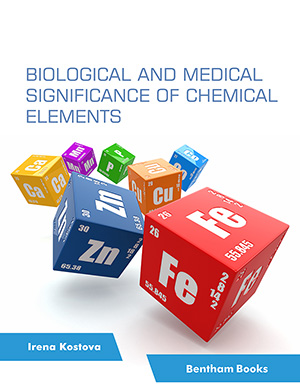Abstract
Background: Bladder cancer (BCa) is the most common malignancy of the urinary system. Inflammation is critical in the occurrence and development of BCa. The purpose of this study was to identify key genes and pathways of inflammatory bowel disease in BCa through text mining technology and bioinformatics technology and to explore potential therapeutic drugs for BCa.
Methods: Genes associated with BCa and Crohn's disease (CD) were detected using the text mining tool GenClip3, and analyzed using Gene Ontology (GO) and the Kyoto Encyclopedia of Genes and Genomes (KEGG). A protein-protein interaction (PPI) network was constructed by STRING and visualized in Cytoscape, and modular analysis was performed using the Molecular Complex Detection plugin (MCODE). Finally, the genes clustered in the first two modules were selected as core genes, and the drug-gene interaction database was used to discover potential therapeutic drugs.
Results: We identified 796 genes shared by "Bladder cancer" and "Crohn's disease" by text mining. Gene function enrichment analysis yielded 18 enriched GO terms and the 6 most relevant KEGG pathways. A PPI network with 758 nodes and 4014 edges was constructed, and 20 gene modules were obtained using MCODE. We selected the top two gene clusters as core candidate genes. We found that 3 out of 55 selected core genes could be targeted by 26 existing drugs.
Conclusion: The results indicated that CXCL12, FGF2 and FSCN1 are potential key genes involved in CD with BCa. Additionally, 26 drugs were identified as potential therapeutics for BCa treatment and management.
Keywords: Bladder cancer, inflammatory bowel disease, crohn's disease, text mining, drug discovery, key genes.
[http://dx.doi.org/10.3322/caac.21660] [PMID: 33538338]
[http://dx.doi.org/10.1016/j.eururo.2020.03.055] [PMID: 32360052]
[http://dx.doi.org/10.21037/tau-20-1020] [PMID: 33532306]
[http://dx.doi.org/10.3389/fsurg.2021.636791] [PMID: 34124132]
[http://dx.doi.org/10.1016/j.trecan.2019.05.011] [PMID: 31311657]
[http://dx.doi.org/10.3322/caac.21631] [PMID: 32767764]
[http://dx.doi.org/10.1038/nrurol.2017.82] [PMID: 28675174]
[http://dx.doi.org/10.1016/j.urology.2020.10.039] [PMID: 33181123]
[http://dx.doi.org/10.3390/jcm8111970] [PMID: 31739460]
[http://dx.doi.org/10.3389/fimmu.2018.00074] [PMID: 29441064]
[http://dx.doi.org/10.1038/ajg.2009.760] [PMID: 20332773]
[http://dx.doi.org/10.1007/978-3-0348-0837-8_8] [PMID: 24818724]
[http://dx.doi.org/10.21037/tlcr.2019.12.20] [PMID: 32038938]
[http://dx.doi.org/10.1016/j.clinthera.2019.04.003] [PMID: 31030996]
[http://dx.doi.org/10.1007/s00520-018-4096-2] [PMID: 29476419]
[http://dx.doi.org/10.1093/bioinformatics/btz807] [PMID: 31681951]
[http://dx.doi.org/10.1093/nar/gkr988] [PMID: 22080510]
[http://dx.doi.org/10.1093/nar/gkaa1074] [PMID: 33237311]
[http://dx.doi.org/10.1093/nar/gkx247] [PMID: 28407145]
[http://dx.doi.org/10.1007/s13318-016-0335-4] [PMID: 27086359]
[http://dx.doi.org/10.1016/j.hoc.2021.02.001] [PMID: 33958144]
[http://dx.doi.org/10.1016/j.cgh.2013.03.034] [PMID: 23602821]
[http://dx.doi.org/10.1038/nrc2090] [PMID: 17384581]
[http://dx.doi.org/10.1159/000447259] [PMID: 27318857]
[http://dx.doi.org/10.1038/cmi.2017.107] [PMID: 29082918]
[http://dx.doi.org/10.1007/s10147-017-1187-x] [PMID: 29022185]
[http://dx.doi.org/10.18632/aging.103369] [PMID: 32579540]
[http://dx.doi.org/10.1155/2020/9143695] [PMID: 33204728]
[http://dx.doi.org/10.1684/ecn.2009.0175] [PMID: 20167562]
[http://dx.doi.org/10.1016/j.urolonc.2014.09.020] [PMID: 25477183]
[http://dx.doi.org/10.3892/or.2012.1948] [PMID: 22895562]
[http://dx.doi.org/10.1186/s13046-019-1102-6] [PMID: 30823924]
[http://dx.doi.org/10.3892/or.2016.4889] [PMID: 27350089]
[http://dx.doi.org/10.1038/sj.bjc.6605570] [PMID: 20160723]
[http://dx.doi.org/10.1111/cas.12844] [PMID: 26544536]
[http://dx.doi.org/10.1093/aje/kwq437] [PMID: 21367875]
[http://dx.doi.org/10.1016/j.anndiagpath.2018.01.008] [PMID: 29661728]
[http://dx.doi.org/10.1016/j.tem.2012.05.001] [PMID: 22704720]
[http://dx.doi.org/10.1016/j.ejphar.2019.172472] [PMID: 31228447]
[http://dx.doi.org/10.1159/000051006] [PMID: 11741131]
[http://dx.doi.org/10.1200/JCO.2010.32.3139] [PMID: 21502557]































